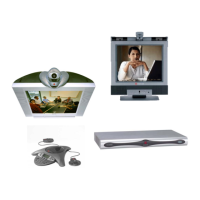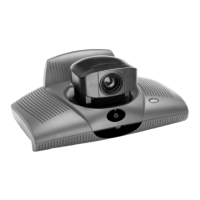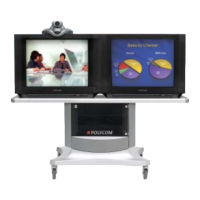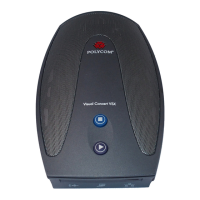CONFERENCE SYSTEM DESIGN
© Polycom, Inc. 49 VORTEX EF2280 Reference Manual
C
ONFERENCE
S
YSTEM
D
ESIGN
Good audio or video conferencing is more than acoustic echo cancellation.
Before installing the EF2280, you should consider how your whole conference
system will work together. The goals of conference system design are the fol-
lowing:
• Transmit intelligible speech
• Reproduce received speech intelligibly
• Prevent echoes
• Interface properly with transmission equipment
• High quality program audio
• Intelligible sound reinforcement (if needed)
Noise and
Reverberation
Intelligibility can be affected by noise and reverberation. Noise comes from
various sources such as HVAC, computers, projectors, or traffic. Some ways to
improve the Signal to Noise Ratio (SNR) in your system include placing micro-
phones closer to the talkers, using electronic noise cancellation, and applying
acoustical treatments. The EF2280 is a great way to reduce noise in your sys-
tem and improve the SNR. Polycom’s patent pending noise cancellation algo-
rithm, included in the EF2280, removes up to 15 dB of ambient background
noise and improves perceived quality as well as intelligibility.
Reverberation in a conference system can reduce intelligibility in a room. To
reduce reverberation and increase intelligibility, use directional microphone
and loudspeakers, place microphones closer to the talker, and use acoustical
treatment.
Consider Room
Gain
When planning your conferencing system, you should also consider the room
gain that will occur as a result of your microphone and loudspeaker place-
ment. Room gain refers to the relative level of the audio going to your ampli-
fier (remote end speech or telephone speech) and the level of this audio
being picked up by the microphone. We recommend a room gain of 0 dB or
less for the best results. But for difficult acoustic environments, the EF2280,
as well as any of the EF products, can handle up to 15 dB room gain, which
means that it offers great flexibility in your conference system design.

